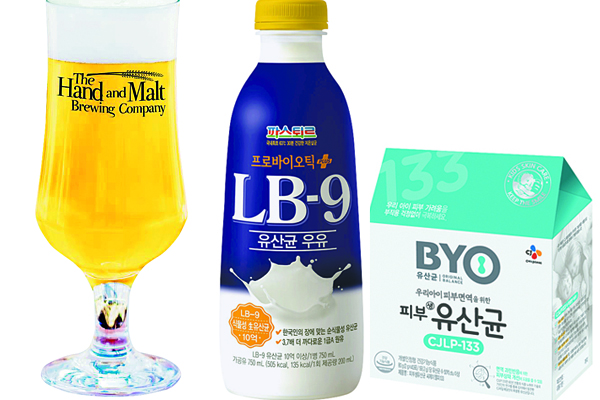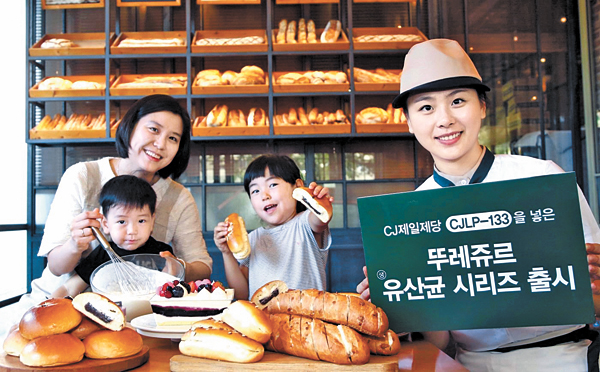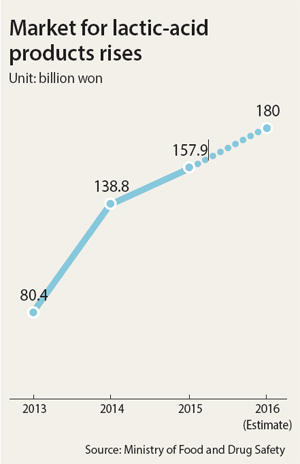Food manufacturers add lactic acid as appetite for it rises

Above: From left, food products that include kimchi’s lactic acid bacteria - the Hand & Malt Brewing company’s K-Vice, Lotte Food Pasteur’s LB-9 Lactic Acid Milk and CJ CheilJedang’s BYO Skin Living Lactic Acid Bacteria.

CJ Foodville’s Tous les Jours bakery presents an array of bread and cakes that contain lactic acid bacteria extracted from kimchi. [THE COMPANIES]
CJ CheilJedang’s bakery brand Tous les Jours said Tuesday that it will release bread and cakes with kimchi’s lactic acid bacteria. Likewise, Lotte Confectionery also released last month two types of chocolate bars that contain vegetable lactic acid bacteria extracted from kimchi. Lotte Food Pasteur recently introduced the LB-9 Lactic Acid Milk and the Hand & Malt Brewing Company, a domestic brewer added lactic acid to its new beer “K-Vice” unveiled in April.

“Unlike lactic acid bacteria in milk, which is relatively fragile to process, the ones found in kimchi can survive in salty food,” said Yoon Suk-min, a researcher at Lotte R&D Center.
As for the recent trend for lactic acid bacteria in kimchi, he added that “the latter is superior than any other lactic acid bacteria in terms of survival rate and effectiveness, which is why it can be used in such a different array of products.”
CJ CheilJedang’s BYO Skin Living Lactic Acid Bacteria was the first product to contain the bacteria.
It was developed by Kim Bong-jun who began researching the organic compound in 2007 to find a product that would help alleviate his son’s tendency to develop allergies.
“The lactic acid bacteria extracted helped my son to stop scratching in 10 days,” he said. “As Koreans eat a lot of vegetables and are used to fermented food, it is natural that lactic acid bacteria from kimchi fits us better.”
The market for lactic acid bacteria products almost doubled in two years from 80.4 billion won ($71.96 million) in 2013 to 157.9 billion won in 2015, according to the Korea Food and Drug Administration. Analysts predict that the number will reach 180 billion won this year, as interest in lactic acid is expected to boost development in the food industry.
Domestic companies are now eyeing the overseas market. The world’s lactic acid bacteria market was worth $30 billion last year and is growing 7 to 8 percent every year, according to Grand View Research, a U.S. market research institute.
BY SUNG HWA-SUN [song.kyoungson@joongang.co.kr]










with the Korea JoongAng Daily
To write comments, please log in to one of the accounts.
Standards Board Policy (0/250자)